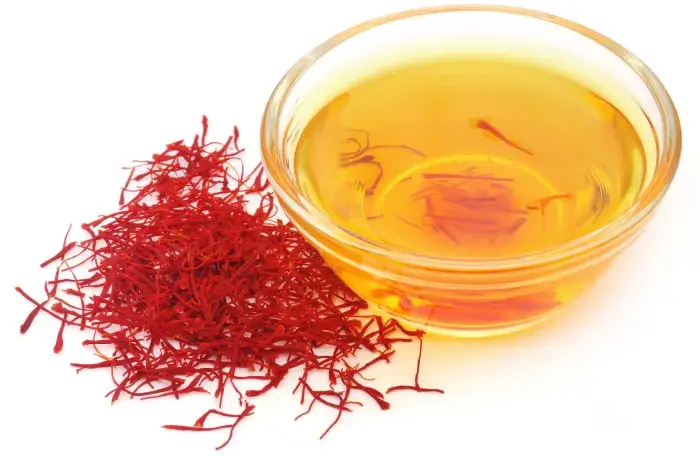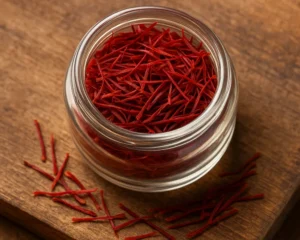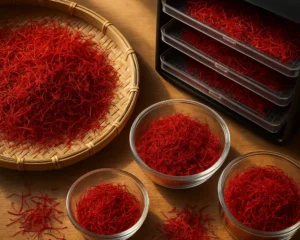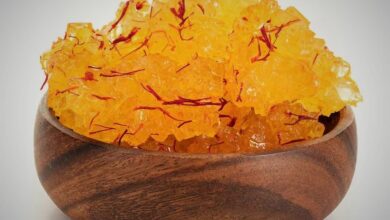Mastering the Art of Saffron Storage
Saffron, a staple in Persian cuisine, is praised not only for its vibrant color and delightful aroma but also for its medicinal properties. Known as the ‘gold spice,’ saffron commands a high price, making it essential to store it properly to avoid waste. This article will explore various saffron storage techniques to help you preserve its unique attributes for the longest possible time. From refrigeration to freezing, discover how each method ensures your saffron remains as exquisite as the day you purchased it.

Ingredients
Varies based on usage
| Ingredient | Amount |
|---|---|
| Saffron threads | As needed |
| Glass or plastic airtight containers | Several |
| Ice cube trays | 1-2 |
Instructions
Step 1: Storing Saffron in the Refrigerator – To preserve the saffron’s integrity, refrigeration is highly recommended. Place the saffron in an airtight glass or plastic container to prevent exposure to humidity and contaminants. Position the container in the coldest section of your refrigerator to maintain a stable temperature, allowing the saffron to remain fresh for up to 2-3 days.

Step 2: Freezing Saffron for Extended Use – For long-term saffron storage, freezing is an effective method. Transfer the saffron to small, airtight containers to inhibit moisture and air. This process ensures that the saffron retains its flavor and color for 2-3 months. When removing saffron from the freezer, let it thaw to room temperature slowly to prevent condensation, which can alter its quality.
Step 3: Using Stainless Steel Containers – While metal containers can protect saffron from moisture, it’s important to choose stainless steel to avoid chemical reactions that may affect saffron’s quality. Keep these containers refrigerated to optimize saffron storage. Remember to label the containers with the date of storage for ease of tracking.

Step 4: Creating Saffron Ice Cubes – For convenient, single-use portions, pour brewed saffron into ice cube trays. Cover with plastic wrap or a lid to shield against freezer odors. This saffron storage technique allows you to use fresh saffron as needed, preventing spoilage and waste. Simply melt the ice cube naturally or in warm water before use.
Pro Tips
To ensure optimal saffron storage, always protect it from direct sunlight, dust, and high temperatures. Aim to maintain a humidity level below 35% and avoid any exposure to open air. Utilize airtight glass containers for short-term storage and opt for freezing when preserving saffron for several months. Monitoring for signs of spoilage, such as discoloration or unpleasant aroma, helps maintain saffron quality. Also, investing in high-quality saffron ensures the best results.
Frequently Asked Questions
If your saffron exhibits a musty or sour odor, discolors, or has an unusual taste, it may have gone bad. Always check for signs of mold or a white film on the surface.
Storing saffron threads is preferable as they retain flavor and aroma longer than ground saffron. Ground saffron is more susceptible to losing its potency over time.
Saffron ice cubes allow for convenient, pre-measured portions that help maintain the spice’s quality and prevent waste. They are particularly helpful if you use saffron infrequently.




